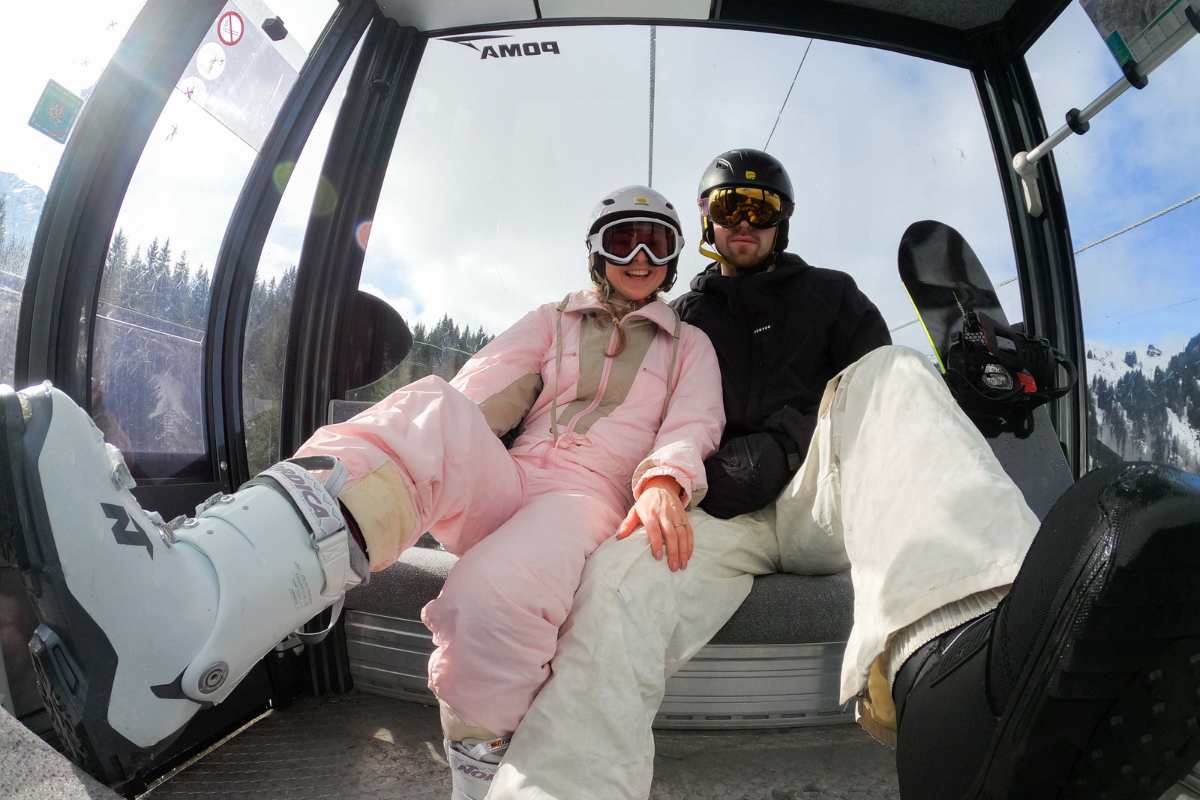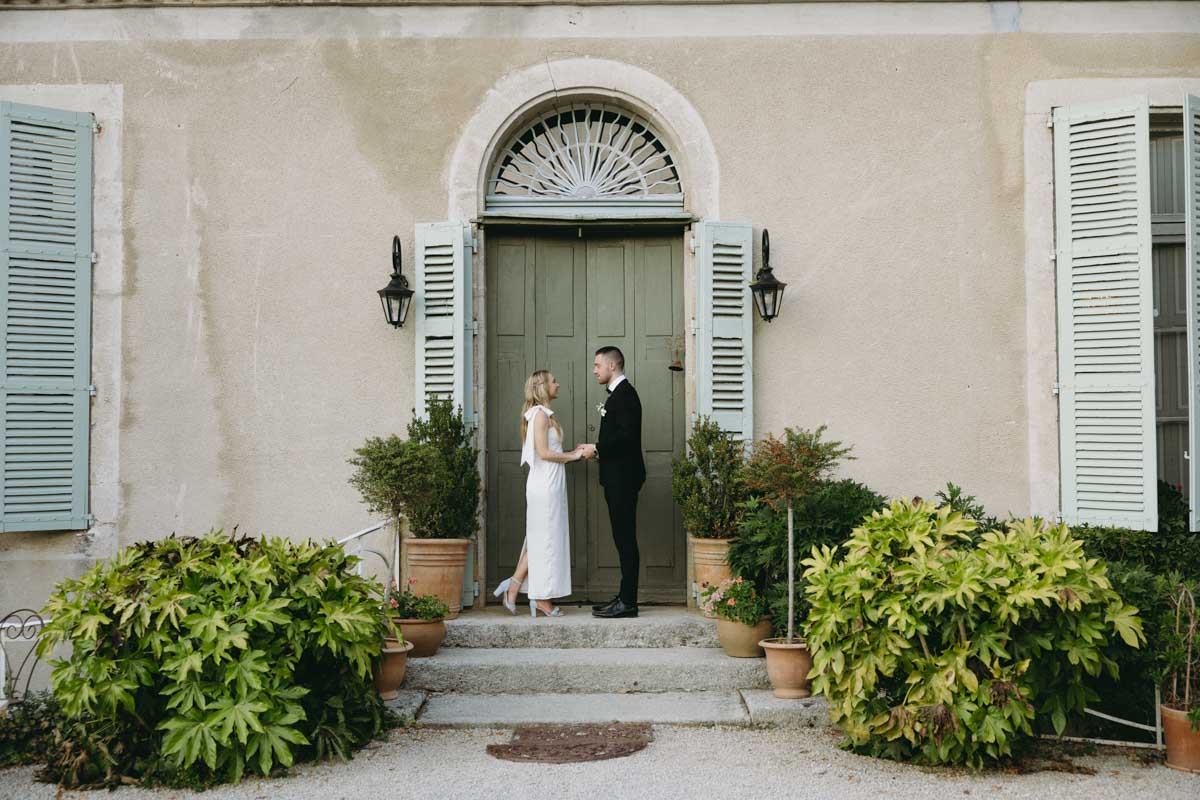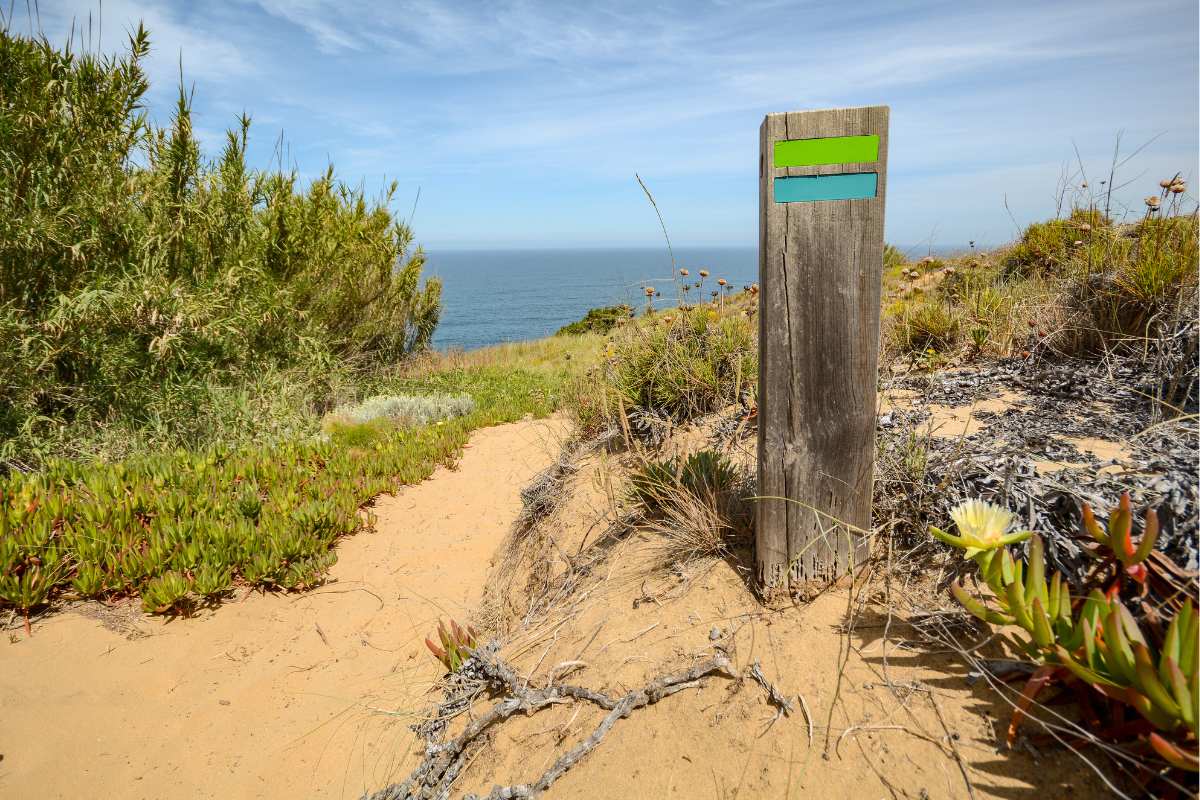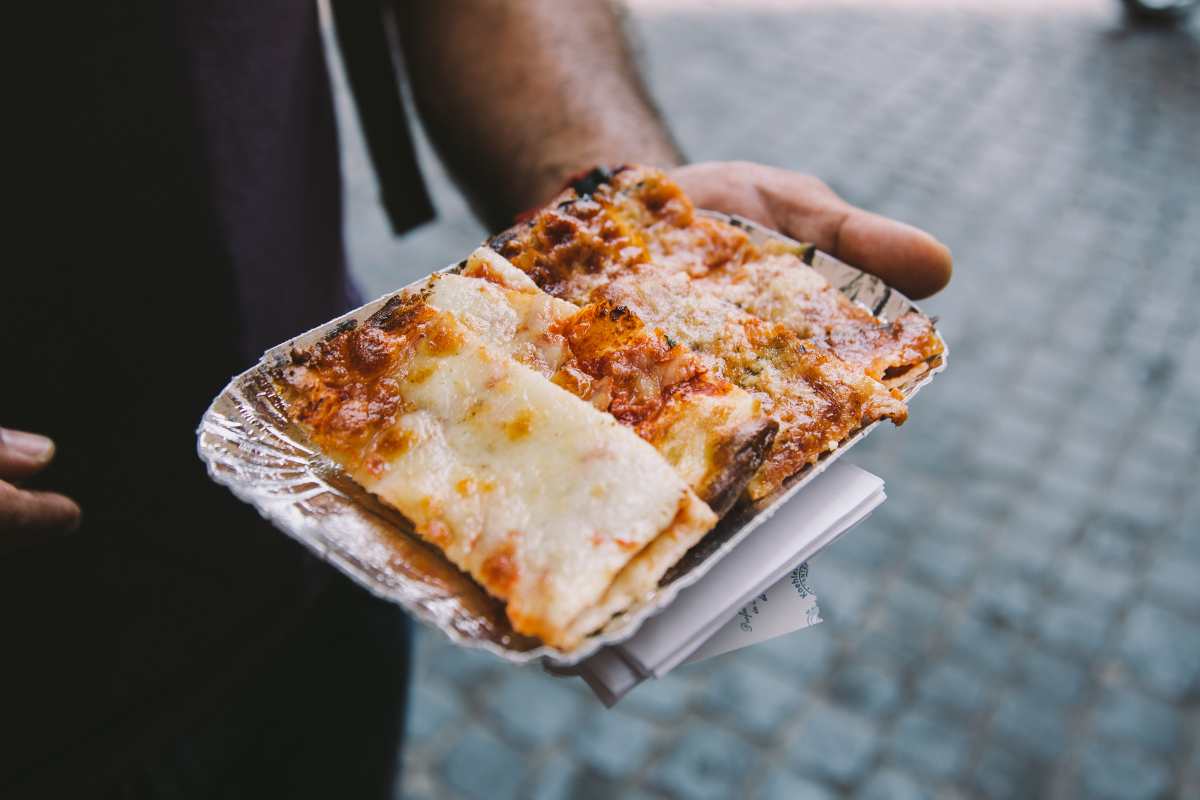Are you a travel blogger looking for a new camera? This comprehensive guide will show you the best cameras for travel blogging to suit every skill level/ budget!
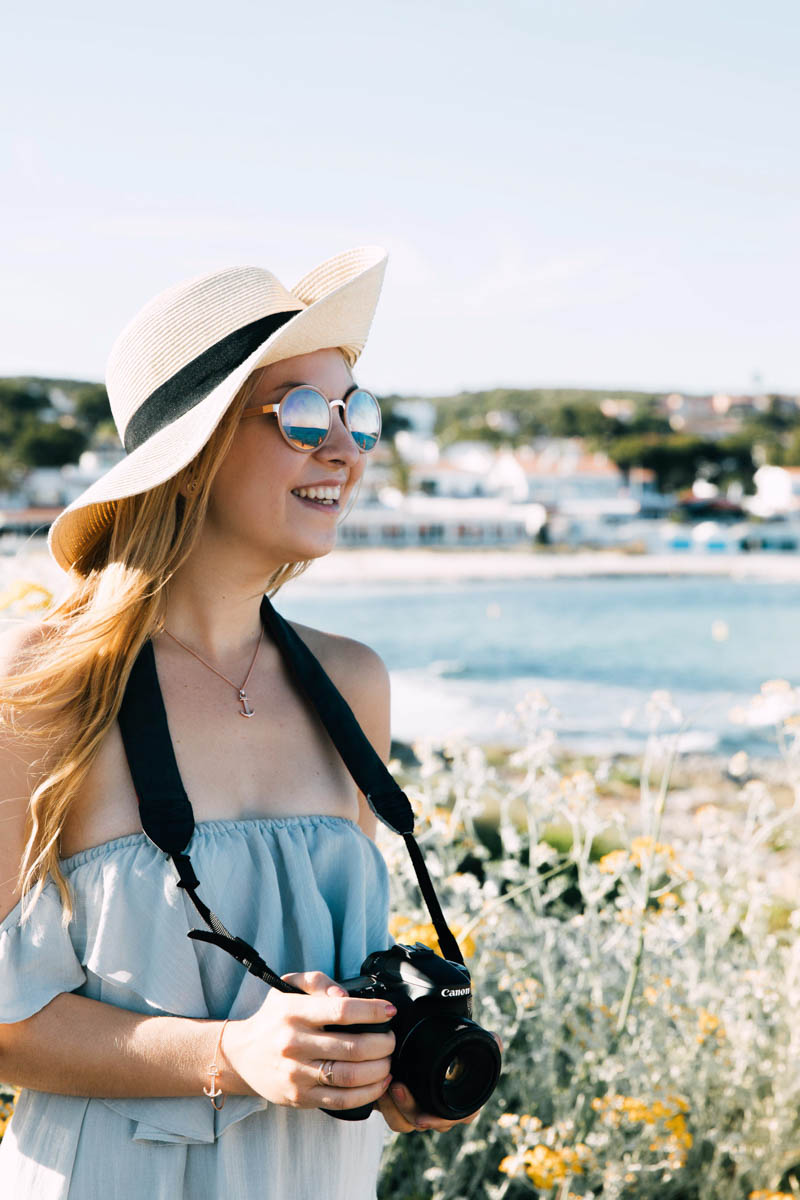
If you are a travel blogger looking to improve the quality of your content, you are in the right place. The first step to levelling up your travel photography/ videography is owning the right camera gear.
Choosing what camera gear to invest in can be an overwhelming process. Today, I am going to simplify the process by walking you through a variety of cameras to suit different budgets, skill levels and uses.
READ NEXT: A quick & easy guide to starting a travel blog!
How to choose the right travel blogging camera for you
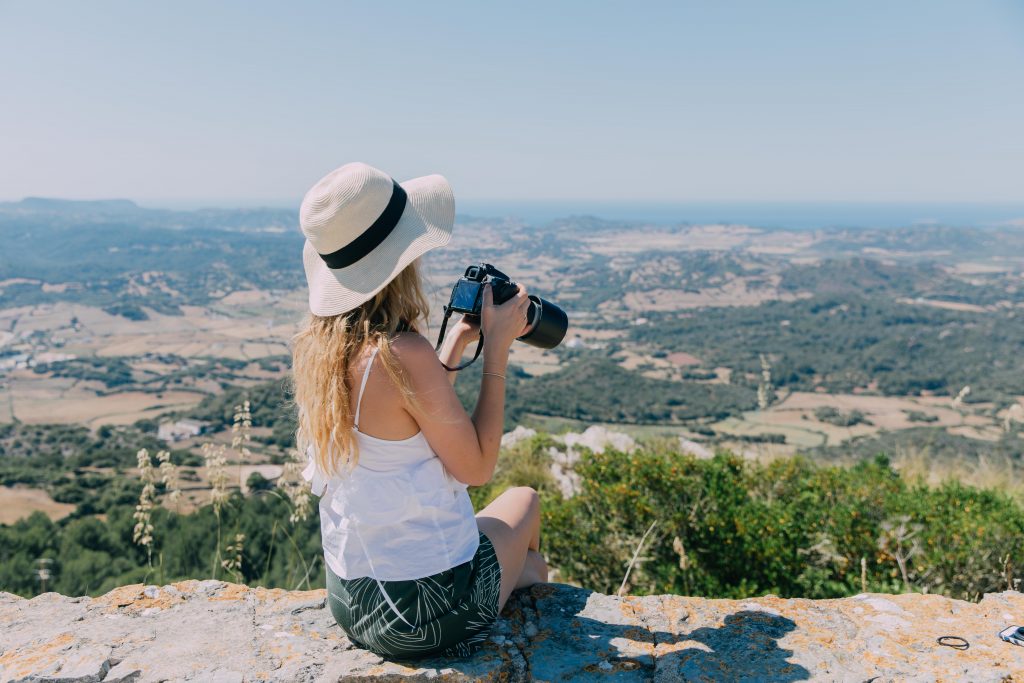
Before reading any further, it is really important to know that camera gear is simply a tool. It is not what defines your skills as a travel blogger. You can produce incredible content on a low-end phone just as easily as you produce terrible content on an expensive, high-end camera.
There is also no one-size-fits-all when it comes to cameras for travel bloggers. There are many factors to consider before investing in gear. The most important thing is to choose the camera that best suits YOU and your needs.
Before reading further, ask yourself the following questions:
- Cost – How much money am I willing to spend?
- Portability– What size camera am I willing to carry around?
- Versatility– What do I want the camera to be able to do?
- Quality – What standard of image/ video quality do I want?
- Features– What additional features do I want (eg. wifi connectivity, waterproof body)?
Pros & Cons of Camera phones for travel blogging
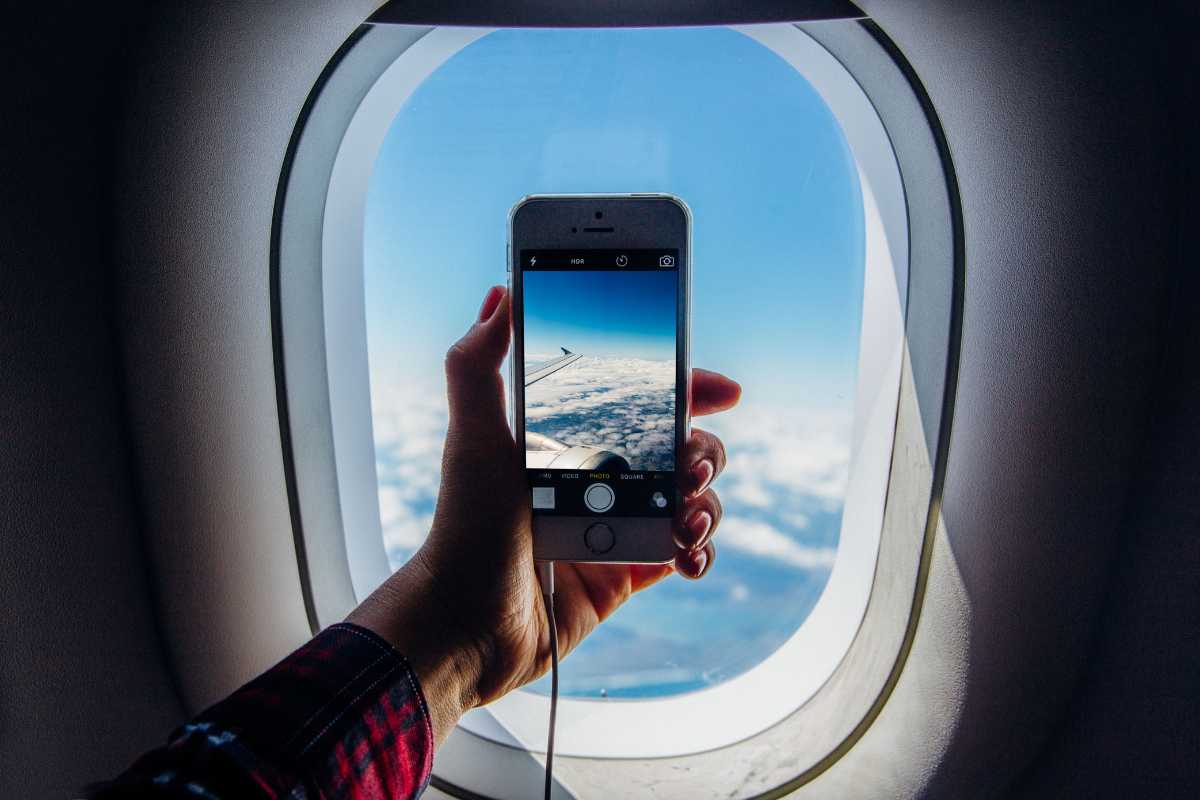
Best for: Beginner travel bloggers
The most convenient, portable and cost-effective camera to use is already sitting in your pocket! Below are some of the pros and cons of using your camera phone as a travel blogger:
Cost–effectiveness: 5/5
✓ No upfront investment if you already have a decent camera phone
✓ Purchasing a higher-end phone with a better camera is still much more cost-effective than buying a whole new camera set-up
Portability: 5/5
✓ Super light and easy to carry around compared to a large camera
✓ You have it on you all the time, so you’ll always be ready to capture the moment
Quality: 3/5
✓ Camera phones now feature better lenses + high resolutions than ever before
✖ Phone sensors are very small which limits the quality (particularly in low light)
✖ The quality of a tiny phone lens can not compare to a proper camera lens (particularly with the depth of field, telephone & macro capability)
Versatility: 3/5
✓ Camera phones work well for capturing everyday photos and videos
✓ Many camera phones now offer features like zoom, macro, portrait and night mode
✖ All of these modes have limitations on the quality that can be achieved
✖ Nowhere near as technically versatile as other cameras
Features: 5/5
✓ Being able to capture, store and edit videos and images on one device is a massive time-saving and money-saving advantage
✓ Very easy to share the content you have created on social media and with others
Best Camera Phones for Travel Blogging
If you are going to use a phone as your primary camera, it is worth investing in a high-end model with the best possible camera. Below are the top camera phones I’d recommend for travel bloggers:
Best All-Rounder: iPhone 14 Pro Max

Key features:
- 12MP main camera with a large sensor and a fast aperture
- 12MP ultra-wide camera with macro mode
- 12MP telephoto camera with 3x optical zoom
- Selfie camera with autofocus and a wide-angle mode
- 4K video recording at 60fps
- Additional modes: cinematic video, portrait mode, night mode
Positives:
✓ Natural-looking colours & accurate exposure
✓ Great image stabilization & smooth transitions
Negatives:
✖ Very high price tag
✖ Limited customization options for iOS users
Best Value: Google Pixel 7 Pro

Features:
- 50MP main camera with a large sensor and a fast aperture
- 12MP ultra-wide camera
- 48MP telephoto camera with 4x optical zoom
- 12MP selfie camera with autofocus and a wide-angle mode
- 4K video recording at 60fps
- Additional modes: HDR+, Night Sight, Portrait Mode, and Super Res Zoom
Positives:
✓ Delivers sharp, detailed, and well-exposed images in any lighting condition
✓ Smooth and responsive performance
Negatives:
✖ Lacks a microSD card slot for storage expansion
✖ Relatively small battery capacity
Best Quality: Samsung Galaxy S23 Ultra

Key Features:
- 200MP main camera with a variable aperture and a laser autofocus system
- 12MP ultra-wide camera
- 10MP telephoto camera with 10x optical zoom
- 40MP selfie camera with autofocus and a wide-angle mode
- 8K video recording at 30fps
- Additional modes: HDR10+, Night Mode, Pro Mode, and Single Take
Positives:
✓ Incredible resolution, dynamic range, and zoom capabilities
✓ Large and vibrant display
✓ Long-lasting battery life
Negatives:
✖ Bulky and heavy to hold
✖ Very high price tag
Recommended Accessories for Camera Phones
Portable Tripod

A portable tripod is one of the most useful accessories you can invest in if you are using your camera phone for travel blogging. I use the ATUMTEK extendable tripod and selfie stick and absolutely love it. It is super compact but has the ability to extend to 60″. It also comes with a Bluetooth remote.
Ring Light
A ring light is another essential accessory for your camera phone. A ring light is so handy for situations where there is not enough natural light. I use the ATUMTEK ring light which is super compact yet powerful. I like that you can adjust its brightness and colour temperature.

Popsocket
A pop socket is one of the smallest yet most useful accessories I’ve bought for my phone. It allows you to have a much better grip on your phone, which in turn means you can record steadier videos.

Pros & Cons of mirrorless cameras for travel Blogging
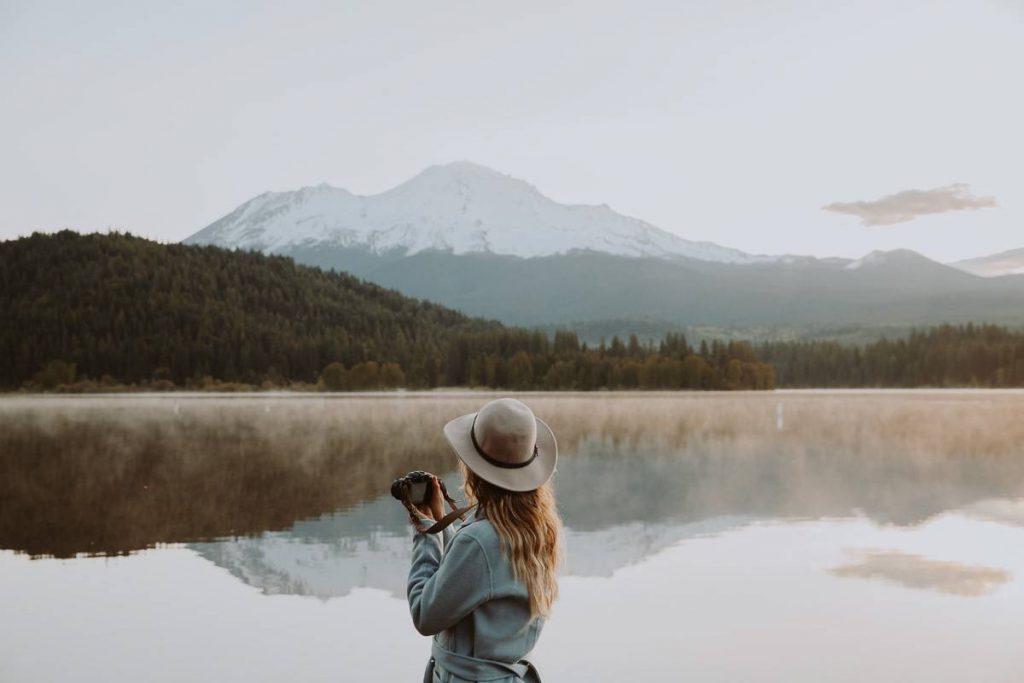
BEST FOR: Enthusiast- Professional Travel Blogger
If you are ready to invest in gear to step up the quality of your content, a mirrorless camera is a fantastic option. Whether you are an enthusiast travel blogger or have been in the industry for years, mirrorless cameras are the perfect all-rounders.
Cost: 2/5
✓ Wide range of mirrorless cameras on the market to suit all different budgets
✖ They still can be very expensive, especially when purchasing additional lenses
Portability: 4/5
✓ Lighter and more compact than DSLR’s making them relatively easy to carry around
✖ Still required to be carried in a separate camera bag
Quality: 4.5/5
✓ Mirrorless cameras often have large sensors and deliver high image quality, low-light performance and depth of field
✓ Video quality and functionality of mirrorless cameras tends to outperform most DSLR’s
✖ Photo quality may not match high-end DSLR’s, especially in challenging lighting conditions or with moving subjects
Versatility: 4/5
✓ Electronic viewfinders show real-time exposure, focus and histogram information
✓ Can change lenses to be able to shoot a range of subjects
✖ Tend to be a more limited range and quality of lenses compared to DSLR’s
Features: 4/5
✓ Many models equipped with wireless connectivity so you can easily download your photos and videos onto your phone
✖ Fewer physical controls and buttons to DSLR’s which can make them less ergonomic to operate
Best Mirrorless Cameras for Travel Blogging
Mirroless cameras do come at a wide variety of price points. Below are the top mirrorless cameras I’d recommend for travel bloggers to suit each budget type:
Best Budget: Fujifilm X-S10

Positives:
✓ 26MP APS-C sensor with high image quality and color rendering
✓ 4K video at 30fps and FHD video at 240fps
✓ In-body image stabilization with up to 6 stops of compensation
✓ Fully articulated touchscreen and electronic viewfinder
✓ Deep grip and customizable controls
✓ Weather-sealed body and dual SD card slots
Negatives:
✖ Very high price tag
✖ Mediocre battery life
✖ Noisy images at high ISOs
✖ Limited lens selection
✖ No top LCD screen
✖ No headphone jack
Best Midrange: Canon EOS R7

Positives:
✓ High-resolution 5MP APS-C sensor with fast autofocus
✓ 4K video at 60fps and FHD at 120fps
✓ In-body image stabilization with up to 8 stops of compensation
✓ Fully articulated touchscreen
✓ Compact and lightweight body with ergonomic grip
✓ Wi-Fi and Bluetooth connectivity
Negatives:
✖ Very high price tag
✖ Not a full-frame sensor
✖ Prone to overheating in 4K video
✖ Limited dynamic range and low-light performance
✖ No top LCD screen
✖ No headphone jack
Best High-end: Sony Alpha A7 IV

Positives:
✓ 33MP full-frame sensor with BIONZ XR processor
✓ 4K video at 60fps and FHD video at 240fps
✓ In-body image stabilization with up to 5.5 stops of compensation
✓ Fully articulated touchscreen and electronic viewfinder
✓ Weather-sealed body and dual SD card slots
✓ Cloud connectivity and AI-powered autofocus
Negatives:
✖ Expensive compared to rivals
✖ Prone to overheating in 4K video
✖ Large crop factor in 4K video at 60fps
✖ Complex menu system and interface
Recommended Mirrorless Camera Accessories
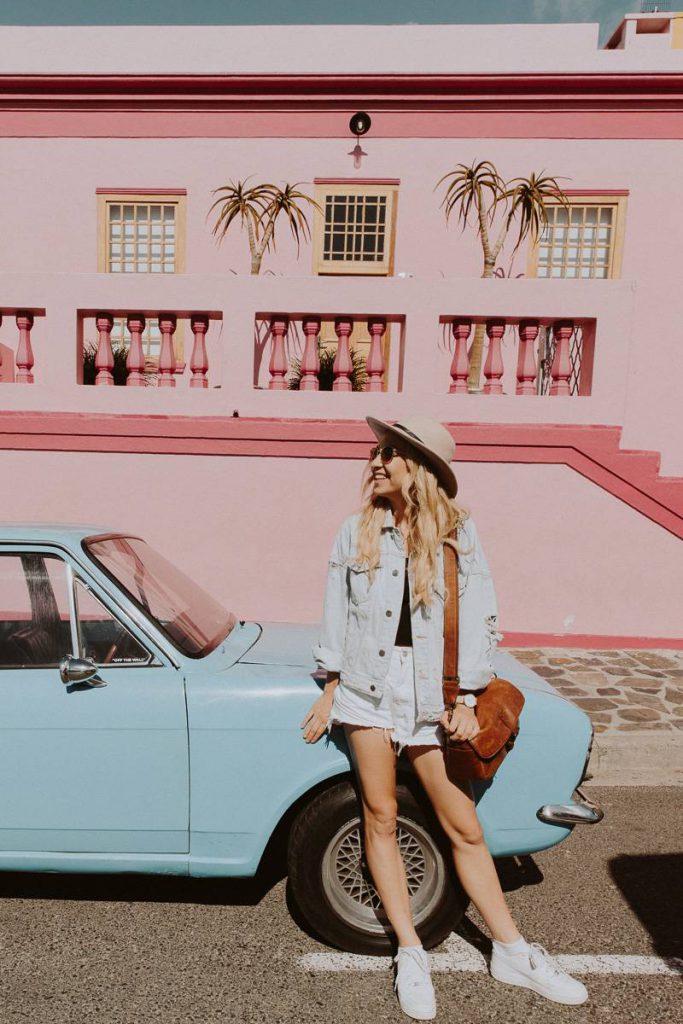
Portable Tripod

One of the advantages of a lightweight mirrorless camera is they are compatible with portable tripods. One such tripod is the Joby Gorillapod, which has bendable legs. Not only can you prop your camera up on surfaces, you can also wrap the tripod legs around something like a pole or tree branch.
Compact Camera Bag

If you want a gorgeous camera bag to store your mirrorless camera (or DSLR for that matter), I’d highly recommend the ONA bowery bag. It’s got a soft, vintage-looking leather exterior that disguises it from actually looking like a camera bag and a fully-padded interior.
Pros & Cons of DSLR Cameras for Travel Blogging

BEST FOR: Professional Travel Bloggers
If you are wanting to take your travel photography to a professional level, a DSLR is the way to go. When a full-frame DSLR camera is paired with a high-end lens, the image quality is unparalleled. However, they do come as a real financial investment.
Cost: 1/5
✖ High-end DSLR cameras and lenses come with extortionate price tags
✖ You can purchase lower-end DSLR models with kit lenses, however, image quality will not compare
Portability: 1/5
✖ The heaviest + bulkiest cameras on the market, so you need to be willing to bear the weight
✖ The more lenses you get, the heavier and less portable your kit becomes
Quality: 4.5/5
✓ Full-frame DSLR’s large sensors deliver produce the highest quality images, best low-light performance and more depth of field control
✖ Video quality and functionality tend to not be as good as some mirrorless cameras
Versatility: 4/5
✓ Largest range of lenses and accessories available
✖ Optic viewfinder so you cannot see live adjustments to exposure, focus etc.
Features: 4.5/5
✓ Some models are equipped with wireless connectivity so you can easily download your photos and videos onto your phone
✓ Many buttons and controls making it easy and ergonomic to shoot
Best DSLR Set Up for Travel Blogging
Full disclosure: the following recommendations are slightly biased. Below is the camera and lens set-up that I have been using for the past six years as a professional travel blogger. This set-up has served me extremely well so I can confidently recommend it.
Best Camera: Canon 6D MKII

Positives:
✓ High-resolution 26.2 MP full-frame sensor with 26.2MP and great autofocus system
✓ Excellent image quality with low noise, good color accuracy, and sharp details
✓ Fully articulated touchscreen with intuitive menu system and vari-angle display
✓ Weather-sealed body with durable and comfortable design
✓ Good battery life with up to 1200 shots per charge
Negatives:
✖ No 4K video and limited video features compared to rivals
✖ Only one SD card slot where other cameras have two
✖ Limited AF coverage with 45 points all grouped together centrally in the frame
✖ Poor dynamic range compared to other full-frame cameras
NOTE: I personally choose the Canon 6DMKII model over the Canon 5DMIV for a few reasons. It has a slighter lighter and smaller body, a tilting touchscreen (as opposed to a fixed screen), and a lower pricetag (without sacrificing much when it comes to quality or functionality).
Best Lens: Canon 24-70mm f2.8 II

Positives:
✓ Excellent image quality across the zoom range
✓ Fast and accurate autofocus with USM motor
✓ Versatile focal length for a variety of subjects and situations
✓ f/2.8 aperture provides great depth of field and low-light capabilities
✓ Low distortion and chromatic aberration compared to other zoom lenses
Negatives:
✖ Heavy, bulky and expensive
✖ No image stabilization which can be useful for handheld shooting in low light
✖ Prone to flare and ghosting when shooting against bright light sources
✖ No macro capability with a minimum focus distance of 0.38m
Recommended DSLR Camera Accessories

Carbon Fibre Tripod

If you want to take photos of yourself travelling solo or do long exposures, a tripod is an invaluable investment. For a very sturdy yet lightweight tripod, I’d highly recommend one from the manfrotto carbon fibre range.
Camera Backpack

A sturdy camera backpack is the perfect way to carry your DSLR and lenses. I would recommend getting one that doesn’t look like a camera backpack from the exterior (like the one linked below) so it isn’t targeted for theft. The interior is still fitted with dedicated padded compartments to fit your camera gear plus a laptop slot.
Pros & Cons of Action Cam for Travel Blogging
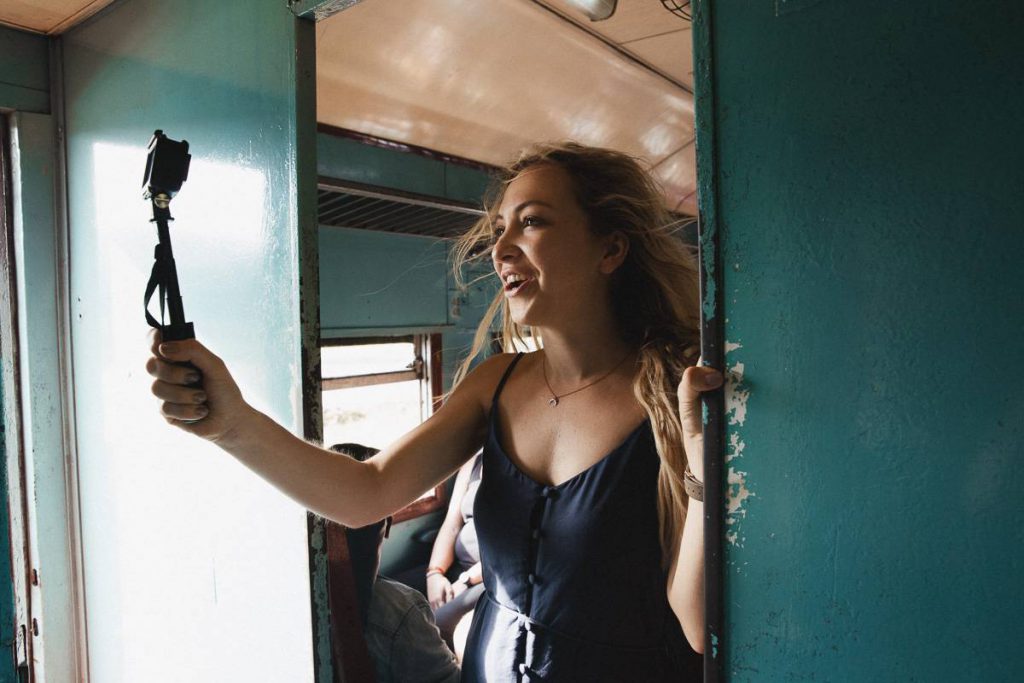
BEST FOR: Adventure Travel Bloggers
If you an adventure travel blogger or vlogger, no camera will serve you quite as well as an ActionCam. Or more specfically, a GoPro. These small, durable cameras are incomparable when it comes to capturing high-quality action footage.
Cost: 4/5
✓ Fairly affordably compared to other cameras, especially given their features
✖ Additional costs for mounts, SD cards and various accessories which can add up
Portability: 4/5
✓ Tiniest, most portable cameras on the market
✓ Waterproof and shockproof, meaning you can virtually use them anywhere
Quality: 3/5
✓ The quality of the video is mind-blowing for such a small camera
✓ Amazing in-built stabilization for video
✓ They can also capture super sharp, high-res RAW photos
✖ Does struggle in low-light with both video and photo quality
Versatility: 3/5
✓ Fitted with super-wide angle lenses= great for capturing action, point-of-view and landscapes shots
✖ Having a fixed lens without any zoom= no good for faraway subjects, close-ups or portraits
Features: 4/5
✓ Equipped with Wifi + bluetooth connectivity so you can easily download your photos and videos onto your phone
✓ Include many useful camera modes like time-lapse, hyper-lapse, burst mode and more
Best Action Cam for Travel Blogging
When it comes to Action Cams, in my opinion, nothing compares with a GoPro. GoPro’s have come a long way over the years. The latest iteration, the GoPro Hero Black 11, has got to be the best action cam on the market.
GoPro Hero Black 11

Positives:
✓ Big sensor for wide view and flexible editing
✓ 5.3K60 + 4K120 video and 27MP photos
✓ Smooth and level video with HyperSmooth 5.0
✓ Waterproof and tough with clear lens and screens
✓ Long-lasting battery for cold weather and more recording
✓ Cloud-connected for easy upload and highlights
Negatives:
✖ Not ideal for long-form recording or macro work
✖ One battery won’t get you through the day
✖ Mediocre low-light performance compared to some rivals
✖ Average audio quality that could be improved

Other Tools I Recommend for Travel Bloggers
- Photo Editing: Lightroom
- Mobile Video Editing: Capcut
- Website Builder: Strikingly
- Web Hosting: HostGator
- Invoicing software: Zintego.com
Enjoyed this guide to the best cameras for travel blogging? Pin for later!



